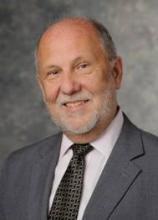WASHINGTON – While doctors can serve a critical role in advocating for their patients to stop smoking, most aren’t trained on how to do so, according this year’s Tobacco Atlas, a report detailing tobacco’s effects on health care and global economics.
The report, now in its fourth edition, was published by the World Lung Foundation and the American Cancer Society.
Dr. Judith L. Mackay, The Tobacco Atlas coauthor and a senior policy adviser to the World Health Organization, said smoking cessation training, is missing from undergraduate and graduate medical schooling, and hence, from the exam room.
"[Doctors] might say to [their patients] ‘Smoking is harmful’ but there’s a whole manner of tips and advice, groups that can be set up, [and] pharmaceutical agents that can be used, where countries can afford it. ... But if you’re not trained in knowing them and understanding them and how to use them, there’s a massive gap between the needs of the patients and then the actual ability of the health profession to basically help them, Dr. Mackay said in an interview at a Washington briefing on the Tobacco Atlas.
She added that physicians should also receive training in health advocacy.
"Doctors are not taught how to make a representation to a finance minister, to put the tax up. They’re not taught how to run a press conference. They’re not basically taught how to do interviews ... and yet what can be more important than getting our health messages to the right people, whether they be government or whether they be the media."
Michael Eriksen, Sc.D., lead author of the report, also suggested that one of the easiest ways for physicians to address tobacco use is to treat it as a vital sign during physician encounters and monitor it accordingly.
The report defines five steps physicians should actively take with patients:
• Ask about tobacco use.
• Advise patients to quit and inform them on the health risks.
• Assess the patient’s willingness to quit.
• Assist the patient in quitting through pharmacologic and counseling measures.
• Arrange for follow-up and monitor the patient’s progress.
When considering effective measures to help patients quit, Dr. Eriksen advised that pharmacologic measures alone have only a 6% success rate, compared with 20% for patients who take medication and also attend antismoking groups and 10% for those who only attend a group.
Outside of clinical measures, however, Dr. Eriksen said physicians can be effective advocates for policy changes, such as clean indoor air laws, tobacco education in schools, and state-level tobacco tax increases. He added that patients with tobacco-related conditions often don’t survive long enough to advocate on their own behalf.
"The chest physicians who deal with the devastation are powerful advocates for changing the status quo," said Dr. Eriksen, who serves as dean of the Institute of Public Health at Georgia State University, Atlanta. "If you’re in a community where you do both [clinical monitoring and advocacy], that’s really going to have a double-barreled impact on success rates and getting people to quit smoking." Dr. Eriksen is also former director of the Office on Smoking and Health and is currently a consultant at the Centers for Disease Control and Prevention.
As advocates for smoking cessation, physician can also have a lasting affect on the healthcare system, according to Keith Hansen, the World Bank’s director of human development in Latin America and the Caribbean.
"[Health care] puts tremendous strain on the state, which has to pay for expensive health services much earlier than it should if we prevent these [tobacco-related] illnesses. And, of course, it’s a tremendous drain on the health system," Mr. Hansen said.
The report details that, in the United States, cigarette smoking was responsible for $193 billion in annual health-related losses, including $96 billion in direct medical costs, from 2000 to 2004. This represents nearly 5% of total health care expenditures from 2003-2008.


